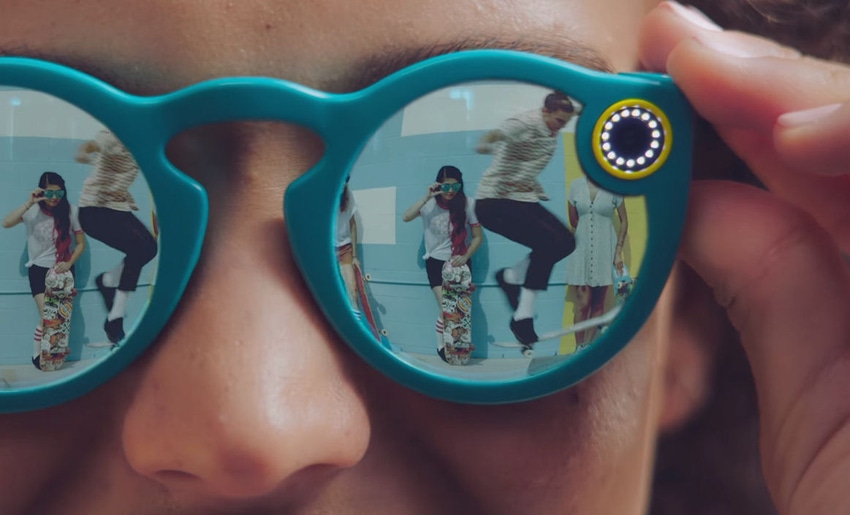A FCC filing from Snap indicates the social media firm is set to have another stab at making its connected glasses work, after a tepid response to the first go.
April 12, 2018

A FCC filing from Snap indicates the social media firm is set to have another stab at making its connected glasses work, after a tepid response to the first go.
The filing is protected by various confidentiality requests, though it indicates Snap is working on a ‘wearable video camera’ with ‘spectacles’ branding and ‘model 002’ on the packaging. The product will also be compatible with the 2.402-2.48 GHz Bluetooth and 2.412-2.462 GHz Wifi frequency ranges. While there is still a bit of ambiguity, most would come to the fair assumption Snap is launching a new and improved range of Spectacles.
Perhaps it was a product ahead of its time or the team hadn’t worked out all the bugs, but the first attempt was less than successful (putting it mildly). The product was launched with a notable advertising campaign and promised great things to the industry. Unfortunately hundreds of thousands of products are reportedly sitting unsold in a Chinese warehouse as the product fell faster than a lead balloon.
This was an unfortunate development for Snap and the industry on the whole, as the product has the opportunity to bridge a couple of divides between the digital dream and reality. When the product was initially launched in 2016, connected products were limited. A lot has happened over the last two years to normalise the concept.
Snap has a unique opportunity in the tech space to make some positive waves here. It has a young audience, many of whom are digitally native and therefore more accepting of new ideas, and a direct usecase. You snap the content on your glasses and directly upload to the app. Few other brands have the content platform to build such a logical link, as few other platforms have built their message around user-generated content.
Should the idea of connected glasses take off, new doors are opened for wearables, as well as augmented reality and immersive content. This is where this sub-sector has struggled; normalising the hardware. Perhaps one of the reasons VR and AR have stalled over the last couple of months is because they are asking the consumer to take too large a step forward. Users like to be drip fed incremental advances, as progress can be a scary thought. Asking consumers to go from yesteryears normality to the fully immersive experience, where the user is essentially removed from the physical world, might have been too much.
The industry should be looking at Snap and hoping for a win here. Get the hardware out onto the market and then applications can be built into and on top of it. This is how the smartphone became successful, applications were limited in the early days, but as soon as mass market penetration was achieved all sorts of wonderful ideas, such as online dating and digital banking, became normalised. This might just be the first and logical step for the VR and AR world.
The one question which remains is whether this is an excellent example of the fail-fast business model, or if it is simply Snap throwing good money after bad. Only time will tell.
UPDATE: In the interest of transparency, your correspondent realised a missed opportunity to use a cereal pun in the headline, and has rightly made a correction
About the Author(s)
You May Also Like








.png?width=300&auto=webp&quality=80&disable=upscale)


_1.jpg?width=300&auto=webp&quality=80&disable=upscale)


.png?width=800&auto=webp&quality=80&disable=upscale)